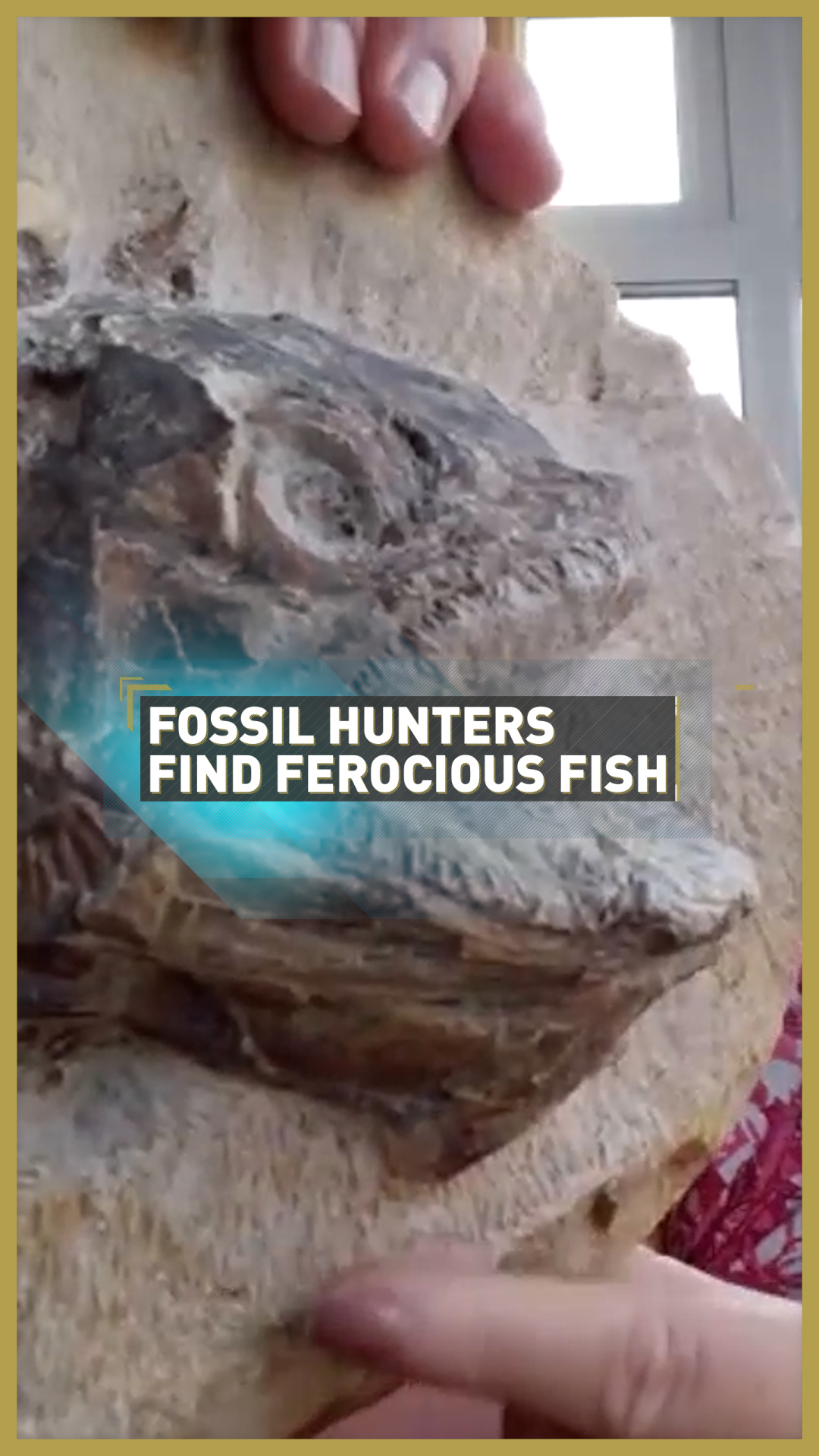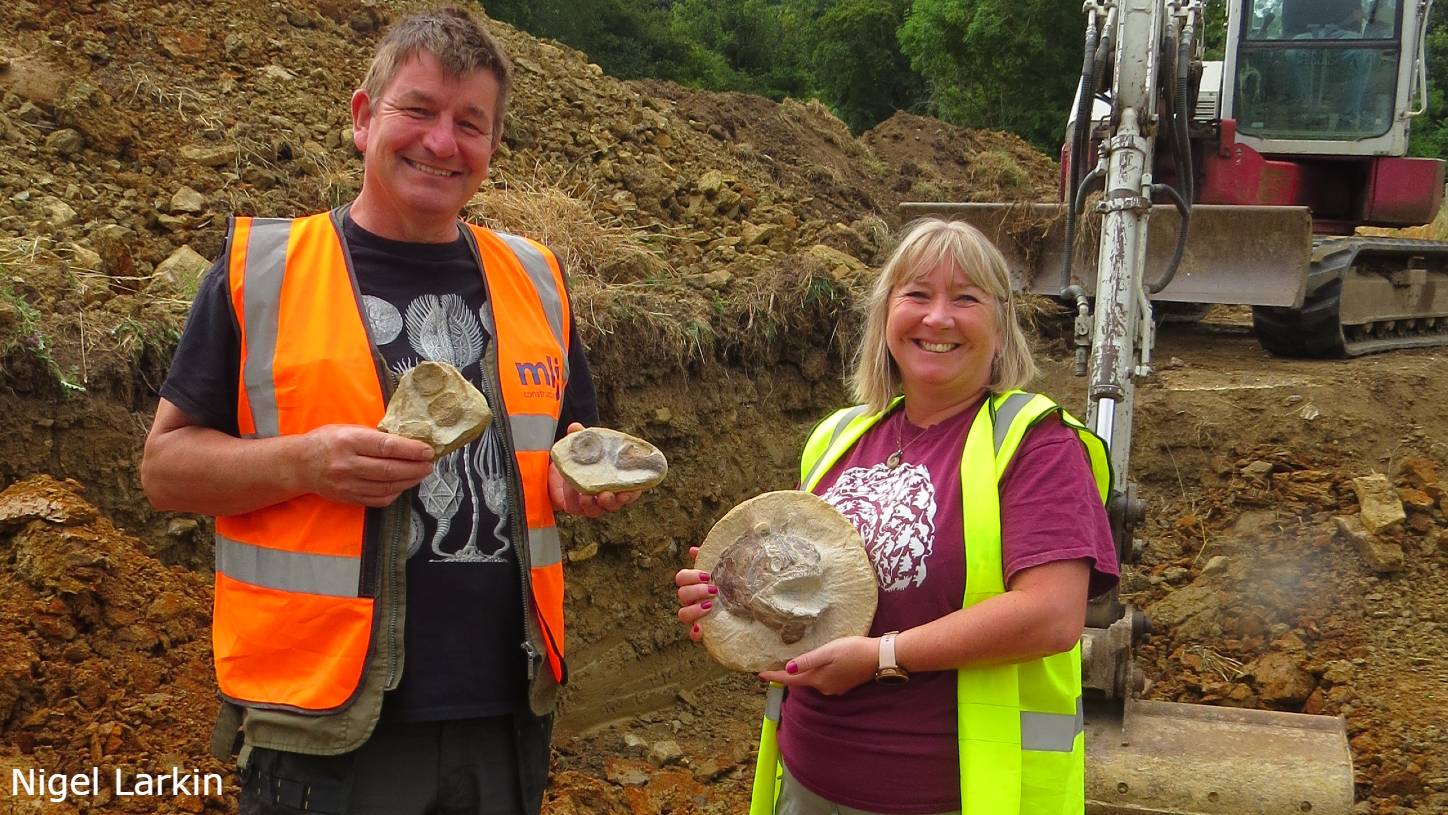00:52

Asking for your favorite ever fossil mission could be a tricky question for a couple who have found mammoth remains in a water park and starfish in a quarry.
However, Neville and Sally Hollingworth, the increasingly famous fossil-hunting couple from Swindon in the UK, don't take too long to answer. They're still grinning over their recently unearthed marine creatures during a Jurassic dig behind a cow shed in rural England.
The haul included squid and bones of two ichthyosaurs, marine reptiles that look like large dolphins. Plus lots of fish – one of which is an eye-popping, teeth-gnashing tuna-like predator called Pachycormus that is 183 million years old.
"The fish is easily in my top three," geologist Neville says. "It looked like a boring lump of rock, we gave it a tap, a bit broke off, and when we got it back to the workshop it was a feeling of utter euphoria and excitement.
"We couldn't believe our luck!"
READ MORE
CGTN special: Cost-of-living crisis across Europe
Meet the ‘sappers’ dealing with Ukraine’s unexploded bombs
Which food has the worst environmental impact?
Sally, a fossil preparator, has no doubt what her top discovery is after finding a Neanderthal hand ax in a Wiltshire quarry. The ax was so special, they used it to cut their wedding cake.
"Finding that ax was my goosebump moment," she says. "The fish fossils are 183 millions old and this axe is 214,000 years and I was the first person to touch it since the last person who dropped it.
"That's when you really get goosebumps and think it's amazing – especially being surrounded by mammoth remains. That's what made that story so much more exciting and that's what led to the BBC documentary and meeting David Attenborough."

Neville and Sally Hollingworth have an incredible record of finding fossils. /Nigel Larkin
Neville and Sally Hollingworth have an incredible record of finding fossils. /Nigel Larkin
The couple are no strangers to making the headlines. They also discovered thousands of fossilised echinoderms such as brittle stars, starfish and sea urchins in another local quarry during the second COVID-19 lockdown.
"The sea lillies and everything we found on that Jurassic Pompeii site was just incredible," Sally adds. "We had no idea how good it was until we started cleaning the stone slabs.
"I can't remember the exact words but I remember Neville running in and shouting at me to run over and see what he had found."
Neville says: "Sometimes there's the excitement in the field, but often it doesn't reveal itself until you've had hours and hours in the workshop and then you have the excitement of discovery again.
"The fish got the Natural History Museum very excited. It's also amazing knowing these fossils will inspire others and help people produce more academic material."
So what is the secret to their incredible success?
"Neville is a geologist and he knows the area off the back of his hand," Sally says. "He also gets these gut feelings. He knows the area, and it's knowing where to look and sometimes it is luck. It's mostly down to Neville doing his homework reading old papers that are hundreds of years old.
"It's a bit like being a fossil detective," Neville says. "A lot of it is luck, but you just have to be in the right place at the right time."

